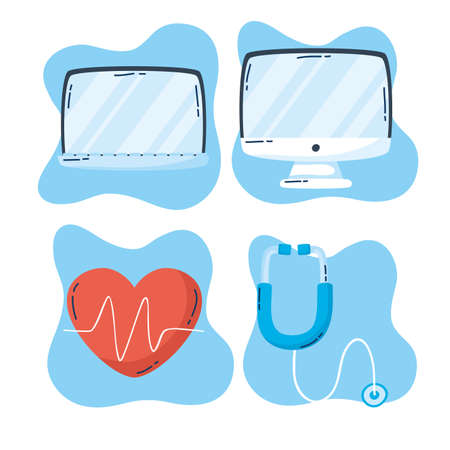Introduction to Chemical Peels in the UK
Chemical peels have swiftly become one of the most sought-after skin rejuvenation treatments across Britain, with increasing numbers of patients from London to Edinburgh embracing this transformative procedure. As more individuals seek effective solutions for concerns like uneven skin tone, fine lines, and acne scars, chemical peels are gaining popularity for their ability to deliver visible results without extensive downtime. In the UK, clinics pride themselves on a tailored approach—combining medical expertise, advanced formulations, and patient safety protocols that reflect the highest standards of British healthcare. This article explores real-life patient journeys with chemical peels from various regions, shedding light on how these treatments are uniquely approached within the UK’s diverse clinical landscape.
Preparing for Your First Chemical Peel: Setting Expectations
Embarking on your first chemical peel can be both exciting and nerve-wracking. Across the UK, patients are encouraged to approach this transformative treatment with a clear understanding of what the process involves. In this section, we guide you through the essential steps that British patients typically take before their initial chemical peel appointment, covering everything from the initial consultation to safety protocols and preparation tips.
Expert Consultation: The First Step in Your Journey
Before any treatment begins, reputable UK clinics prioritise a thorough consultation. During this appointment, practitioners assess your skin type, discuss your medical history, and outline realistic outcomes tailored to your unique needs. It’s also an opportunity for you to ask questions about the procedure, expected results, and aftercare. British clinics are renowned for their patient-centred approach, ensuring that you feel informed and comfortable every step of the way.
Key Questions Addressed During Consultation
| Consultation Focus | Typical Discussion Points |
|---|---|
| Skin Assessment | Skin type, previous treatments, sensitivity levels |
| Medical History | Allergies, current medications, underlying conditions |
| Treatment Goals | Desired results, realistic expectations, timeline |
| Procedure Details | Chemical solutions used, sensation during treatment, downtime required |
| Aftercare Instructions | Post-peel skincare regimen, sun protection advice, follow-up schedule |
Safety Considerations: What UK Patients Should Know
The UK’s regulatory standards ensure that chemical peels are performed by qualified professionals in safe environments. Clinics adhere to guidelines set by bodies such as the Care Quality Commission (CQC), maintaining strict hygiene protocols and using only medically-approved products. Patients are advised to verify practitioner credentials and clinic certifications before booking their treatment—a crucial step in safeguarding your wellbeing.
Typical Preparations Before Your Chemical Peel
- Avoiding Sun Exposure: Patients are commonly instructed to limit sun exposure for at least two weeks prior to treatment to minimise risks of pigmentation changes.
- Cessation of Certain Skincare Products: Discontinue retinoids or exfoliating agents as advised by your practitioner.
- No Recent Cosmetic Procedures: Patients should avoid waxing, laser treatments, or other facial procedures immediately before their peel.
- Hydration: Keeping skin well-hydrated in the days leading up to the appointment is often recommended for optimal results.
- Patching Test: Some clinics may perform a patch test to check for allergic reactions or sensitivities.
Navigating Your Chemical Peel Journey in the UK
The preparation phase is integral to achieving desired outcomes and minimising complications. By following expert guidance and adhering to safety protocols established by UK clinics, patients can set realistic expectations and look forward to positive results from their chemical peel experience. Understanding these preparatory steps ensures a confident start on your journey towards rejuvenated skin.

3. Real Patient Stories: North to South
Across the United Kingdom, individuals from diverse backgrounds are discovering the transformative effects of chemical peels. Their stories highlight not only the versatility of this treatment but also how regional culture and personal motivation play a role in their decision-making process.
From Edinburgh’s Artistic Quarters
Sophie, a 29-year-old graphic designer from Edinburgh, sought out a chemical peel to address persistent post-acne marks that affected her confidence. “In a creative field, first impressions matter,” she explains. After researching clinics in Leith, Sophie chose a reputable aesthetic clinic known for personalised care. She describes her experience as reassuring and professional, noting how the staff’s Scottish warmth put her at ease throughout the procedure and aftercare.
Manchester’s Urban Professionals
David, a 42-year-old solicitor based in Manchester city centre, was motivated by workplace pressures to maintain a fresh appearance. “The legal sector is competitive; looking tired can be mistaken for being less capable,” he shares. David opted for a medium-depth peel at a leading Deansgate clinic. The consultation process was thorough, addressing his concerns about recovery time and visible redness. He appreciated the clear aftercare instructions and discreet follow-up typical of clinics in the North West.
Cardiff’s Community Spirit
Amina from Cardiff, aged 36, decided on a chemical peel after years of sun damage from coastal living. For her, the local clinic’s focus on community wellbeing was key. “They really listened to my story,” Amina recalls. Her treatment journey included check-ins via phone and friendly reminders—reflecting the close-knit culture of South Wales.
London’s Cosmopolitan Diversity
In London, patient experiences are as varied as the city itself. Priya, a 34-year-old PR executive in Shoreditch, wanted to tackle hyperpigmentation before her wedding. Her East London clinic offered advanced peel options tailored to different skin types and ethnicities—a testament to the capital’s multicultural expertise. Priya valued both the clinical precision and the aftercare support provided through digital follow-ups.
Common Threads Across Regions
Whether from Scotland or the South East, patients consistently mention how UK clinics combine medical professionalism with regionally distinct touches—whether it’s Scottish hospitality, Mancunian straightforwardness, Welsh friendliness, or London’s international flair. These authentic accounts reveal that while motivations may differ—from boosting career prospects to preparing for life milestones—the commitment to safety, comfort, and effective results remains universal across Britain’s chemical peel journeys.
4. The Treatment Day: What Really Happens
When the much-anticipated treatment day arrives, patients across the UK find that their chemical peel experience is a carefully choreographed process led by skilled practitioners. From the moment you step into a British clinic, professionalism and patient comfort take centre stage. Below, we break down each step of the chemical peel procedure as it typically unfolds in reputable UK aesthetic clinics, with insights drawn from real-life patient journeys and practitioner expertise.
Step-by-Step Chemical Peel Procedure
| Step | Description | Patient Observations | Practitioner Expertise |
|---|---|---|---|
| Consultation & Consent | The practitioner reviews your skin, discusses your goals, and ensures you understand the procedure. Consent forms are signed before proceeding. | Patients note a thorough explanation and opportunity to ask questions. | Practitioners emphasise individualised assessment and safety protocols. |
| Cleansing & Preparation | Your skin is cleansed to remove oils and impurities. Protective barriers may be applied around sensitive areas like the eyes and lips. | A sense of reassurance as practitioners explain each product used. | Gentle yet meticulous technique is highlighted for optimal results. |
| Application of Peel Solution | The chemical solution is evenly applied using brushes or cotton applicators, tailored to your specific skin needs and agreed peel depth. | Mild tingling or warmth may be felt; patients appreciate updates on what’s happening at each stage. | Precise timing and application ensure safety and efficacy; constant monitoring for any adverse reactions. |
| Monitoring & Neutralisation | The practitioner closely monitors your skin’s response throughout. Once the desired effect is achieved, the peel may be neutralised or removed as required by the formula used. | Praise for attentive care; many patients comment on feeling ‘looked after’ during this period. | Expertise in recognising subtle skin cues is crucial here to avoid over-processing. |
| Aftercare Application | Soothe and protect: calming serums, moisturisers, and high-SPF sun protection are applied to support recovery. | A cooling sensation brings relief; aftercare advice feels personalised and practical. | Practitioners provide bespoke aftercare guidance tailored to British climate considerations. |
What Sets UK Clinics Apart?
Cultural Considerations: British clinics often prioritise discretion, privacy, and clear communication—patients frequently remark on how practitioners “put them at ease” with a warm, approachable manner.
Safety First: Strict adherence to health regulations is evident throughout, reflecting UK standards for cleanliness and professional practice.
Bespoke Approach: Patient feedback highlights the “bespoke” nature of treatment plans in the UK, where no two chemical peels are exactly alike due to careful customisation for different skin types, lifestyles, and concerns.
Your Experience Matters
The treatment day itself is not just about technical skill—it’s an orchestrated experience designed to make you feel informed, safe, and confident about your decision. Whether in London, Manchester, Edinburgh or beyond, British clinics strive to deliver results that respect both your expectations and local standards of care. Understanding these steps helps demystify the process for anyone considering a chemical peel journey in the UK.
5. Aftercare and Results: British Patients Share Their Outcomes
One of the most frequently asked questions among those considering chemical peels in the UK is what to expect during recovery and how to achieve the best possible results. Recovery timelines can vary depending on the depth of the peel, skin type, and individual lifestyle factors. Here, we delve into real experiences from patients across Britain, offering practical aftercare advice that reflects both local weather conditions and daily routines.
Typical Recovery Timelines
British patients who have undergone superficial peels often report mild redness and flaking for three to five days post-treatment. For medium-depth peels, its common to experience swelling and more pronounced peeling for up to a week, while deep peels may require two weeks or longer for initial recovery. Many patients emphasise the importance of planning treatments around social events, particularly given the UKs unpredictable weather—rainy days can actually aid healing by discouraging sun exposure.
Managing Expectations: Realistic Outcomes
Most UK patients observed visible improvements in skin texture and tone within one to two weeks following their procedure. However, many share that patience is key, as final results can take several weeks to fully develop. Importantly, practitioners across Britain highlight that chemical peels are not a quick fix but part of a broader skincare journey. Setting realistic goals based on professional advice helps ensure satisfaction with outcomes.
Practical Aftercare Tips for UK Lifestyles
The British climate—with its frequent overcast skies—may seem forgiving, but patients are consistently advised to use high-SPF sunscreen regardless of season. Lightweight moisturisers are recommended to combat post-peel dryness without overwhelming the skin, particularly during colder months when central heating can exacerbate dehydration. Several patients also suggest using public transport or taxis post-procedure if possible, to minimise wind exposure and air pollution during the delicate recovery phase.
Voices from Across the UK
Sophie from Manchester shares, “I followed my practitioner’s advice strictly—no picking at flakes and plenty of SPF even when it was cloudy. My skin healed beautifully in just under a week.” Meanwhile, David from London notes that his results were subtle at first but improved steadily over a month, reinforcing the value of patience.
Conclusion: Embracing Your Own Journey
Each patients aftercare routine is unique, but universally in the UK, successful outcomes rely on adhering to professional guidance tailored to local conditions. By managing expectations and integrating practical tips suited for British weather and lifestyles, patients across the country are enjoying refreshed complexions and renewed confidence post-chemical peel.
6. Chemical Peel Culture and Trends in Britain
Across the UK, chemical peels have moved beyond their reputation as exclusive treatments for celebrities or the wealthy. Today, they are increasingly viewed as accessible solutions for a variety of skin concerns, from fine lines to pigmentation.
Growing Popularity and Evolving Trends
British patients are embracing minimally invasive cosmetic procedures, with chemical peels ranking high among preferred options. Many clinics across London, Manchester, Edinburgh, and Birmingham report an uptick in enquiries—particularly for lighter peels that offer visible results with little downtime. Lunchtime peels and custom-tailored solutions are especially popular amongst busy professionals seeking subtle yet effective enhancements.
Attitudes Towards Chemical Peels in the UK
Historically, there was a degree of caution surrounding chemical peels in Britain, often fuelled by concerns about unnatural results or adverse reactions. However, patient journeys reveal that attitudes are shifting. Education provided by practitioners and positive word-of-mouth from real-life experiences have built trust. British patients now approach chemical peels with pragmatism—valuing evidence-based treatments and expecting thorough consultations before proceeding.
Common Myths and Frequently Asked Questions
Despite growing acceptance, several myths persist in the UK. One common misconception is that all chemical peels result in excessive peeling or require significant recovery time. In reality, most modern peels are designed for gradual improvement and minimal discomfort. Another frequently asked question is whether chemical peels are suitable for all skin types; practitioners emphasise the importance of personalised assessments to ensure safety and efficacy.
The Role of Practitioners in Shaping Perceptions
Practitioners across Britain play a crucial role in educating patients and dispelling myths. Through open dialogue, before-and-after photos, and transparent discussions about risks and benefits, they empower patients to make informed decisions. This collaborative approach has contributed significantly to the growing confidence around chemical peels throughout the UK.
7. Final Thoughts: Lessons Learnt from UK Patient Journeys
Reflecting on the diverse chemical peel experiences shared by patients across the UK, several important lessons and practical tips emerge. These insights not only highlight what makes a successful treatment journey but also offer invaluable advice for anyone considering a chemical peel.
Synthesis of Key Takeaways
First and foremost, thorough research and careful clinic selection are essential. British patients consistently emphasise the importance of seeking qualified practitioners registered with recognised UK medical or aesthetic bodies. This foundation ensures both safety and efficacy. Equally, honest consultations—where expectations, risks, and aftercare are discussed in detail—were repeatedly mentioned as crucial for satisfaction with results.
Practical Tips from Real Experiences
- Set realistic expectations: Many patients noted that while improvements were noticeable, chemical peels are not “miracle cures.” Understanding your skin’s limits is vital.
- Commit to aftercare: Following post-procedure instructions—such as avoiding sun exposure and using recommended skincare—was pivotal in achieving optimal outcomes and minimising complications.
- Be patient: Several individuals highlighted that results develop over time; immediate effects might be subtle, with full benefits emerging over weeks.
Advice for Prospective Patients
If you’re contemplating a chemical peel in the UK, take advantage of initial consultations to ask questions about practitioner credentials, available peel types, and expected downtime. Don’t hesitate to request before-and-after photos from previous local patients. Additionally, consider your lifestyle and social calendar when scheduling your treatment, as downtime can vary depending on peel depth.
Conclusion
The collective wisdom from real-life UK patient journeys points towards preparation, communication, and diligent aftercare as the cornerstones of a positive chemical peel experience. By learning from others and approaching your decision with care, you can embark on your own journey towards healthier, more radiant skin with confidence.


